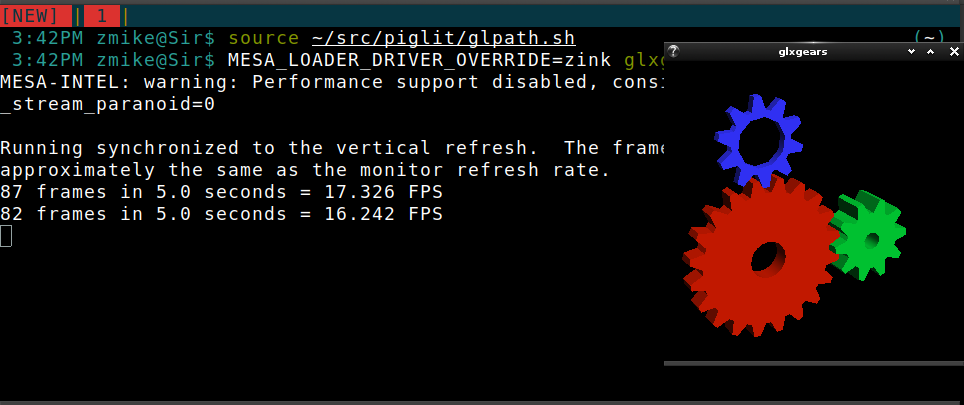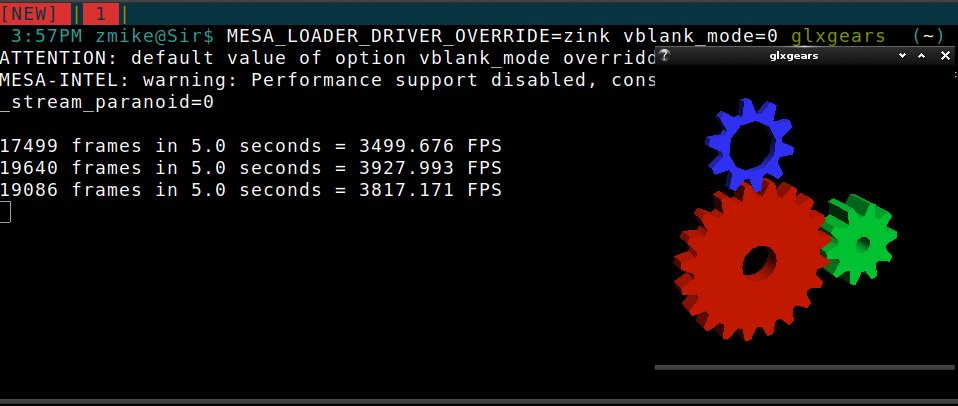Real Benchmarking
Everyone Knows…
That the one true benchmark for graphics is glxgears. It’s been the standard for 20+ years, and it’s going to remain the standard for a long time to come.
Gears Through Time
Zink has gone through a couple phases of glxgears performance.
Everyone remembers weird glxgears that was getting illegal amounts of frames due to its misrendering:
We salute you, old friend.
Now, however, some number of you have become aware of the new threat posed by heavy gears in the Mesa 21.3 release. Whereas glxgears is usually a lightweight, performant benchmarking tool, heavy gears is the opposite, chugging away at up to 20% of a single CPU core with none of the accompanying performance.
Terrifying.
What Creates Such A Monster?
The answer won’t surprise you: GL_QUADS.
Indeed, because zink is a driver relying on the Vulkan API, only the primitive types supported by Vulkan can be directly drawn. This means any app using GL_QUADS is going to have a very bad time.
glxgears is exactly one of these apps, and (now that there’s a ticket open) I was forced to take action.
Transquadmation
The root of the problem here is that gears passes its vertices into GL to be drawn as a rectangle, but zink can only draw triangles. This (currently) results in doing a very non-performant readback of the index buffer before every draw call to convert the draw to a triangle-based one.
A smart person might say “Why not just convert the vertices to triangles as you get them instead of waiting until they’re in the buffer?”
Thankfully, a smart person did say that and then do the accompanying work. The result is that finally, after all these years, zink can actually perform well in a real benchmark:
Stay Tuned
For more exciting zink updates. You won’t want to miss them.


